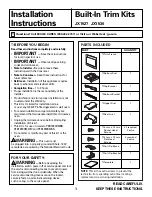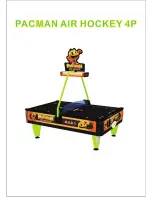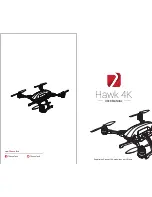
Sharpening Wheels will slow with use. At the same time, the abrasive finish will improve. Do
not be confused by this break in process because it is normal and should be expected. The
diamond wheels are breaking in, NOT wearing out.
Solution:
If after extended periods of use you feel like the diamond coated wheels have
completely lost their aggressive cutting ability, the diamond wheels can be replaced.
For replacement wheels, call Customer Service at (800) 221-4156 or visit our website at
www.smithsedge.com for contact information.
Symptom:
The sharpener will not start when initially plugged into electrical socket.
Cause:
Sharpener or electrical cord could be damaged or malfunctioning.
Solution:
Contact Customer Service at (800) 221-4156 or visit our website at
www.smithsedge.com for contact information.
FREQUENTLY ASKED QUESTIONS
How often should I sharpen my knives?
All fine edge cutlery requires maintenance and sharpening. A sharp knife can easily be maintained
by adhering to a few basic rules. Cut only on soft surfaces such as wood or poly boards. Hard
surfaces like glass, granite, stainless steel, acrylic, or laminate counter tops will dull knives
immediately on contact. Always avoid cutting frozen food, slicing into bones, or using a knife
to pry things open. These uses may result in severely dulling, bending, or breaking your knife.
Sharpen your knife before each use if you want to maintain a razor sharp edge. After extensive
use, if you have honed the knife blade and it no longer slices food with ease, use the COARSE and
FINE sharpening slots to put a new razor sharp edge on your blade.
How can I tell if my knife is sharp?
Use it to cut paper or slice food. If the knife does not cut smoothly, it needs additional sharpening.
My knife is not sharp and I’ve gone through the whole knife sharpening process. What am
I doing wrong?
Although unusual, there are times when you have to repeat both sharpening stages more
than once or make more passes through the sharpening slots. This may occur during the first
sharpening of a knife or if a knife was sharpened incorrectly by another process. It may also
occur when sharpening blades made of tempered steel, which are extremely hard, such as some
hunting knives.
You can use the Adjustable Edge Pro electric knife sharpener to sharpen these type of knives,
but you may have to repeat the process several times or make numerous passes through the
sharpening slots (in excess of 10 times or more for extreme cases). This extended process will
only be necessary the first time you use the sharpener for this type of blade. Thereafter, you will
be able to sharpen the blade following the normal sharpening procedures.
Sometimes the sharpening wheel stalls when I am drawing the knife through the blade guides.
What causes this?
The knife sharpener is designed so that very little effort is needed to draw the blade through the
sharpening slots. If excessive downward pressure is applied to the knife as it is being pulled
through the sharpening slots, the sharpening wheel may stall.
How do I get an even edge on my blade?
It is important that you keep the proper orientation of the knife blade to the wheels. Always keep
the knife blade perpendicular to the counter top and in the center of the sharpening slot, so that
the blade contacts both diamond wheels equally. Make sure the blade does not touch either side
of the sharpening slot. It should be straight up and down in the center of the sharpening slot at all
times. Always sharpen from heel to tip, never back and forth. Remember to lift up slightly on the
handle as the curved portion of the blade is drawn through the sharpening slots.
Occasionally I see sparks when sharpening my knives. What causes this?
At a professional knife sharpening service, certain blades with high carbon content (usually higher
quality knives) sometimes will spark or produce a stream of sparks when they come in contact
with the sharpening wheel. Your Adjustable Edge Pro Electric Knife Sharpener uses the same type
of sharpening wheel that the professionals use. Therefore, you can expect to see similar sparking
when you sharpen blades with high carbon content. This is normal.
My sharpener produces a loud vibrating sound. Why is this?
Your Adjustable Edge Pro Electric Knife Sharpener uses rapidly rotating diamond sharpening
wheels to sharpen knives. Because of the speed of rotation, a vibrating sound may be heard.
This is normal and to be expected. If the noise or vibration becomes excessive, Contact Customer
Service at (800) 221-4156 or visit our website at www.smithsedge.com for contact information.
Are there any tolerances for the angles per side when sharpening?
Generally, there can be a minimum average of + or - 1 degree per side difference in the
sharpening angle. This follows closely to what is generally accepted by the knife manufacturers
for the initial sharpening process.
Maintenance
There is little maintenance required with your Adjustable Edge Pro Electric Knife Sharpener.
To clean the exterior housing, simply unplug from the electrical outlet and clean with a soft,
damp cloth.
• Do not use powdered abrasive cleaners to clean sharpener
• Do not rinse, immerse, or flush the sharpener with water
• Do not use any lubricant or water on the abrasive wheels
Periodically, use a small, nylon brush to scrub the surface of the ceramic stones in the manual
serrated sharpening slot with kitchen cleansing powder and water.
Ceramic Wheels Maintenance
The ceramic wheels will need to be cleaned twice annually, or more often
if you sharpen regularly, to remove the buildup of the metal particles from
the surface of the wheels. If you don’t clean the wheels, their cutting
capabilities diminish. Use only the cleaning brush provided to clean the
ceramic wheels.
Step 1.
Dampen the felt portion of the brush slightly. Squeeze excess water from the brush
before running it through the machine. DO NOT ALLOW WATER TO DRIP INTO THE MACHINE.









































